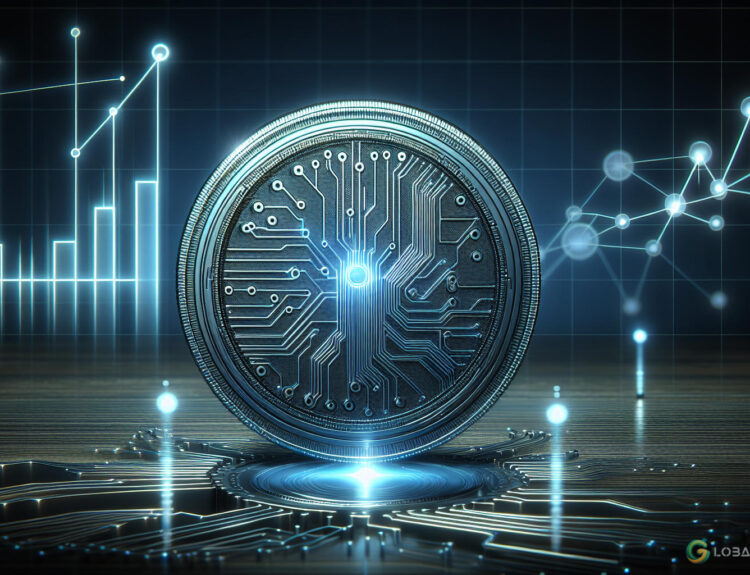Disclosure: The views and opinions expressed here belong solely to the author and do not represent the views and opinions of Global Crypto News’ editorial team.
The internet is a crucial component of the modern information era, yet an estimated two billion people still lack access. This is often due to the lack of commercial viability for traditional telecom operators to provide internet services in remote areas. Despite this, the global financial landscape is rapidly evolving:
- Tokenization: 134 countries, representing 98% of global GDP, are exploring central bank digital currencies (CBDCs). However, the US House passed Bill FIT 21, potentially banning the Federal Reserve from issuing a CBDC, which could impact the tokenization of the US financial sector.
- Mobile Payments: Cash is being replaced by mobile payments in over 23 countries. A report from the Federal Reserve Bank of San Francisco found that cash payments accounted for just 18% of all US payments in 2022.
Wireless traffic is expected to increase approximately 80 times by 2030 compared to 2020. To address this, Helium Mobile founders Amir Haleem, Shawn Fanning, and Sean Carey created a decentralized blockchain-based wireless infrastructure (DeWi) to support Internet of Things (IoT) devices. Helium Mobile utilizes blockchain technology and crypto economics to deliver wireless coverage through decentralized peer-to-peer networks.
In 2019, Helium Hotspots were introduced to expand Helium Mobile’s cellular coverage. These hotspots act as miniature cell towers, creating a peer-to-peer wireless network to connect small, low-power devices over long distances. Helium Mobile’s cell service operates on a mix of towers and user-hosted hotspots. Operators receive MOBILE tokens/NFTs (HNT) as payment, and phone subscribers can opt into location tracking to help guide new hotspot placements.
What is Helium Hotspot, and How Does It Work?
A hotspot is a wireless access point that allows users to connect devices to the internet. Helium Hotspots create a network of user-owned towers in over 170 countries. Users need a mobile phone plan with hotspot data to connect. Helium Mobile’s service runs on a mix of traditional towers and Helium Hotspots, enabling communities to improve their internet coverage without relying on traditional telecom infrastructure.
Amir Haleem, CEO of Nova Labs, noted the traditional telecom industry’s top-down network-buildout model is unsustainable. Helium Hotspot users can earn HNTs, priced at $3.46 as of June 24, 2024, by providing connectivity to nearby subscribers.
Helium Mobile minted nearly one million Hotspot HNTs to support other decentralized physical infrastructure projects (DePINs) using Solana blockchain technology. At current levels, subscribers using Discovery Mapping can earn over 2,000 MOBILE tokens HNT per day. The Solana blockchain charges Helium Mobile users a small fee, paid in SOL tokens, for various transactions.
Helium Mobile has been attracting thousands of new customers in the US with its $20 per month unlimited 5G cellular plan. The company supports various devices, including the Solana Saga, the first web3 native phone.
What is a Web3 Phone?
Solana Mobile, a subsidiary of Solana Labs, introduced the Android-based phone Solana Saga, designed for a mobile-centric web3 experience. The phone combines everyday smartphone utility with enhanced security and privacy, providing seamless access to Solana blockchain defi protocols and other web3 applications.
Helium Mobile’s licensing program aims to transform the global wireless network infrastructure by offering licenses for hotspots and web3 phone devices. Communication giants like AT&T, T-Mobile, NTT, Alibaba, and Tencent have already incorporated blockchain technology for various purposes. World Mobile is addressing wireless dead zones with token payouts from the Cardano blockchain, and Vodafone is integrating cryptocurrency wallets into SIM cards.
Helium Mobile remains the only blockchain-based cell phone coverage device provider. Amir Haleem stated that licensing Helium Mobile technology is a pivotal step in delivering cost-effective wireless connectivity globally, empowering individuals and communities.
NFT Staking Rewards Taxation
Staking allows users to earn rewards while holding certain digital assets. Last July, the US Internal Revenue Service issued guidance clarifying that staking rewards of digital assets are taxable as income upon receipt and as capital gains upon disposal. Helium Mobile users involved in staking can expect to pay taxes on their HNT rewards upon acquisition, even if they haven’t converted their digital assets into fiat.
Stay updated with the latest news on cryptocurrencies, investing, and finance by exploring more articles on Global Crypto News.

























